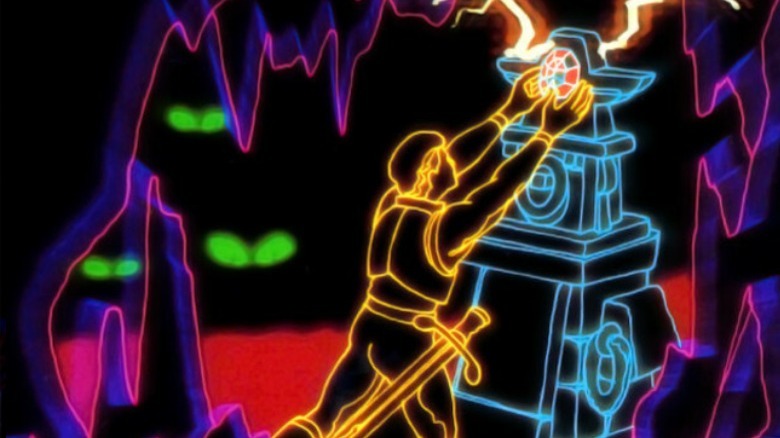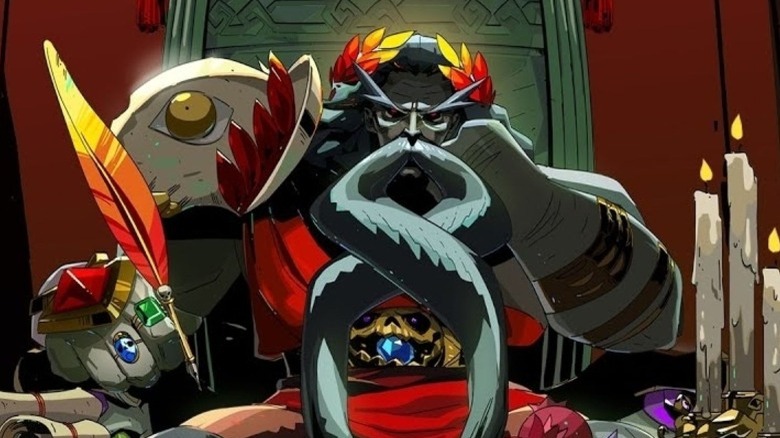Roguelike Vs Roguelite: The Differences Explained
While most types of media are broken up by the types of story being told, video game genres are primarily designated by the kinds of mechanics used and the way the player interacts with the title. Even terms like "shooter" can be broken down into sub-categories like "arena shooter," "hero shooter," "tactical shooter," or "looter shooter." All involve the protagonist firing a ranged weapon, but they each have other mechanics that make them distinct. This means that new terms are constantly created for games as developers tweak classic formulas and come up with new ways for players to experience them.
A new genre was born after a game called "Rogue" released in 1980 that combined the concept of permadeath with randomly generated dungeons. Players had to delve into these dungeons in search of a legendary artifact and try to get out in one piece. Those who died would have to completely start over from the beginning. Many gamers will have heard the terms "roguelike" and "roguelite" at one point or another. Both of these sub-genres spawned from the mechanics established in "Rogue." The two are often used interchangeably, but there are actually a few key differences.
The definition of roguelike
The term "roguelike" first referred to any titles similar to "Rogue." As the sub-genre grew more popular, players and developers felt they needed a more concrete definition which outlined the facets of gameplay that a title needs to qualify. The first meeting of the International Roguelike Development Conference took place in 2008 in Berlin, Germany. This is where the initial definition of the sub-genre was created.
According to RogueBasin.com, there are nine "high value factors" and six "low value factors" that determine if a game is a roguelike. The high value factors include: random environment generation, permadeath, turn-based combat, grid-based navigation, one mode, complex problem solving, resource management, hack'n'slash fighting, and exploration and discovery. Then there are the low value factors: a single player-character, monsters that are similar to characters, tactical challenge, ASCII display, dungeons, and showing numbers such as hit points and attributes. They called this the Berlin Interpretation.
It isn't necessary for a game to meet all of the criteria listed in the Berlin Interpretation to be classified as a part of the roguelike sub-genre, but the more it has, the more "Rogue-like" it is considered.
Roguelites tend to offer more progression
Roguelites generally have a few of the features listed in the Berlin Interpretation, but fall just short of being considered a true roguelike. This isn't bad, it just means that the game in question has a slightly different classification. Many of the most popular run-based titles of the last decade have been designated as roguelites.
"Hades," developed by Supergiant Games, is a great example. It took the industry by surprise when it received nine nominations at the 2020 Game Awards before winning Best Indie and Best Action, as well as being the first video game in history to win a Hugo Award. Still, the game's Steam description refers to it as a roguelike. "Hades" is not turn-based or grid-based, but it follows most of the other rules outlined in the Berlin Interpretation.
The main aspect "Hades" and most other roguelites handle differently is allowing for ability progression. Players who die in "Hades" must start over from the beginning, but there are several currencies that they get to keep. Darkness allows Zagreus to upgrade his abilities while weapons can be upgraded with Titan Blood, making successive runs more manageable. Other titles, such as "Rogue Legacy 2," use similar mechanics. Many gamers feel that this gives them a stronger sense of progression since no run is ever wasted even if they have to start over. The player always learns and their character always grows.



